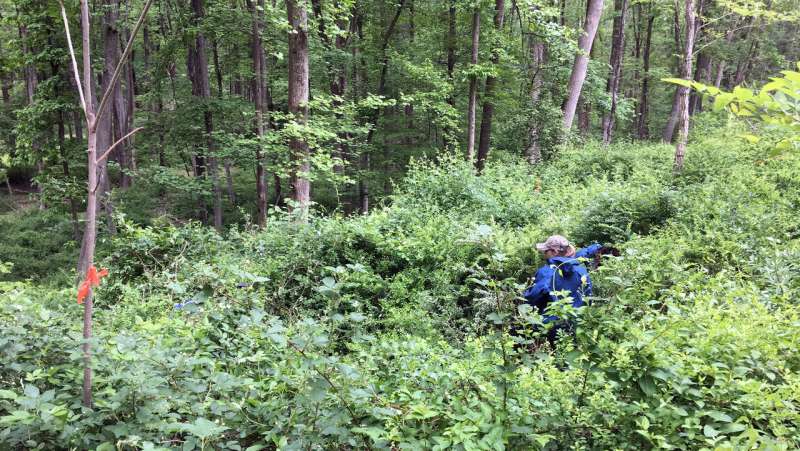As climate continues to warm, study finds several barriers to northward tree migration

Extensive land development, invasive species and too many deer may make it difficult for tree migration to keep pace with climate change in the Northeast, according to newly published research.
The study, led by Kathryn Miller, a plant ecologist with the National Park Service Inventory and Monitoring Division, and Brian McGill, a University of Maine professor of ecological modeling, analyzed U.S. Forest Service data covering 18 states from Tennessee to Maine.
The researchers found a large swath of land in the mid-Atlantic states that was severely lacking in forest regeneration. Even where present, species regenerating on the forest floor were different than those making up the forest canopy.
Earlier studies have raised concern about regional regeneration, but this is the first to document the sheer extent and severity of the problem, according to Miller, who recently earned a Ph.D. from the UMaine School of Biology and Ecology.
Coining the term "regeneration debt" to describe this phenomenon, the researchers found the region simultaneously faces challenges of increasing invasive plants, deer overabundance and heavy land development by humans.
The zone of regeneration debt raises questions about the future of forests in the immediate region, but also far into the northeastern U.S., according to the researchers.
"I monitor forest health in eastern national parks, many of which have the same issues of overabundant deer, regeneration failure and mismatch, and numerous invasive plants," Miller says. "At some point, I started to connect the dots geographically and began to wonder if these problems are restricted to our parks or if they were a symptom of a larger regional problem. Recognizing that this is part of a larger regional issue was both a relief that it wasn't only us, and distressing at just how widespread the problem is."
Miller and McGill say combining this research with a 2018 study they conducted raises even more concerns. The earlier study simulated a century of seed dispersal for 15 tree species across the eastern U.S. while taking into account current land development patterns.
"Our dispersal simulations revealed an area in the mid-Atlantic region with such extensive human land use that tree dispersal was effectively blocked from moving northward. The species most affected by this dispersal barrier are the same oak, hickory and pine species we found to be experiencing severe regeneration debt," Miller says. "Without intervention, we can expect long-term declines in forest cover in the region, and it will become a significant barrier against climate-driven tree migration. In fact, this may already be occurring, as migration studies have yet to detect a strong signal of northern expansion for these tree species."
The new study, "Compounding human stressors cause major regeneration debt in over half of eastern US forests," was published online in the Journal of Applied Ecology.
More information: Kathryn. M. Miller et al. Compounding human stressors cause major regeneration debt in over half of eastern US forests, Journal of Applied Ecology (2019). DOI: 10.1111/1365-2664.13375
Journal information: Journal of Applied Ecology
Provided by University of Maine



















